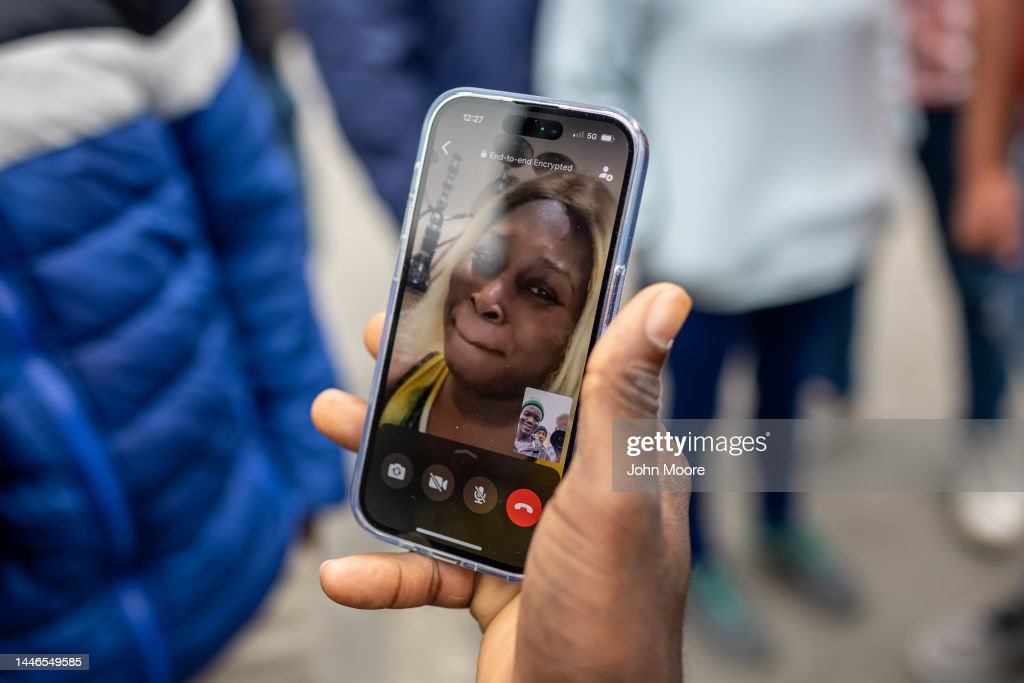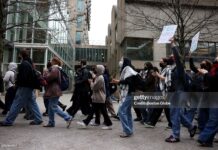By Felicia J. Persaud
News Americas, FORT LAUDERDALE, FL, Fri. Feb. 24, 2023: Just when you think there’s nothing that can’t shock you anymore, along comes a headline that not just stops you in your tracks but sends your anger and anxiety levels ticking up fast.
According to a report in the UK Guardian, not only do black immigrants have to put up with bias from the right wing in the real world, but now we are forced to deal with artificial intelligences bias.
Here’s is the latest shocker in the immigration asylum drama and why it’s so relevant to this column. The US government’s new mobile app for migrants to apply for asylum at the US-Mexico border, called CBP One, is reportedly blocking many Black immigrants, especially from Haiti and Africa, from being able to file their claims because of facial recognition bias in the technology.
Yes, you read that right. Now you understand why my anger and anxiety levels were pushing up past 10.
The US government announced in early January that the new CBP One mobile app would be the only way migrants arriving at the border can apply for asylum and exemption from Title 42 restrictions. At the time, they said it would “reduce wait times and help ensure safe, orderly and streamlined processing.”
But according to advocates and the UK Guardian report, CBP One, is failing to register many people with darker skin tones, effectively barring them from their right to request entry into the US. The non-profits call it an apparent algorithm bias in the technology that the app relies on. They say the algorithm is sharply reducing the number of Black asylum seekers who can fill out their applications.
Emmanuella Camille, a staff attorney with the Haitian Bridge Alliance, a non-profit that aids Haitian and African asylum seekers, said the CBP One app has helped “lighter-skin toned people from other nations” obtain their asylum appointments “but not Haitians” and other Black applicants.
In the Mexican city of Tijuana, at the opposite end the US-Mexico border, near San Diego, another large community of Haitian asylum seekers is waiting and experiencing the same problems with the app, according to non-profits that are assisting them, as are people from African countries and other Black migrants trying to enter.
“The facial recognition is not picking up [images] if people have darker skin tones,” Erika Pinheiro, executive director at Al Otro Lado, a binational legal and humanitarian aid organization, was quoted as saying. He said with the app unable to map the features of many darker-skinned asylum seekers, they cannot upload their photos in order to receive an asylum appointment with the US immigration authorities.
“The Haitians at the workshop were getting error after error message on the app,” she said. “We’ve also seen it affect Venezuelans who are darker skinned.”
“The app is working for some migrants but blocking others, especially those who are most vulnerable,” Felicia Rangel-Samponaro, co-director of the non-profit Sidewalk School, which provides educational programs for asylum seekers in the Mexican cities of Reynosa and Matamoros, near the eastern end of the Texas border, where many Haitians are living in makeshift camps, told the paper.
“There are about 4,000 Black asylum seekers waiting in Reynosa and at least another 1,000 Haitians in Matamoros. Hardly anyone is getting an asylum appointment. Neither population is being represented as it should. I’ve yet to speak with a white asylum seeker who has had the same issue. And we help everybody in both cities,” she added.
Yet migrants are “being told by CBP that the only way they can cross the border is by using this app.”
For now, Rangel-Samponaro said advocates were experimenting with ways to get the technology to work for darker-skinned asylum seekers. One fix they’ve come up with is installing bright construction lights at the shelter in Reynosa, which Haitians and others shine on their faces as they take the photo to upload to the app.
“So far it seems to be working, so the adults can get past that,” she said. “But it’s still not working for children under the age of six.”
Pinheiro points to studies showing that kind of technology tends to do a poor job of identifying people of certain races and ethnicities.
A study from Stanford and the Massachusetts Institute of Technology published in 2018 found that facial recognition programs perform best on light-skinned men — with an error rate of less than 1 percent. Facial recognition systems performed worst on dark-skinned women, getting it wrong more than a third of the time.
“There are really high error rates with certain races, especially Black and Asian applicants,” Pinheiro said. “So we would expect that people who are not white are going to have a harder time with the facial recognition feature.”
So far, CBP has only said it is aware of some of its technical challenges and will “continue to enhance the mobile application as additional improvement opportunities arise.”
How many battles do we have to fight all because of our rich melanin? If your anxiety level is up too after reading this, I understand. Welcome to the day in the life of a Black immigrant.
The writer is publisher of NewsAmericasNow.com – The Black Immigrant Daily News.









